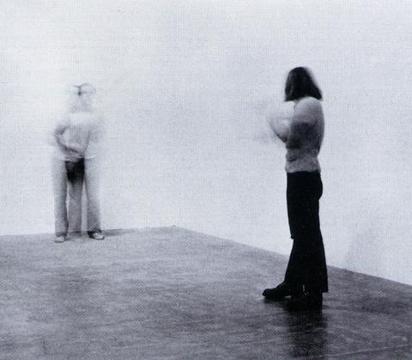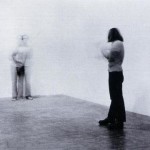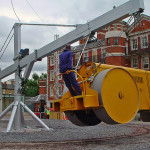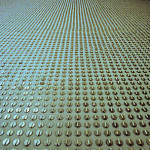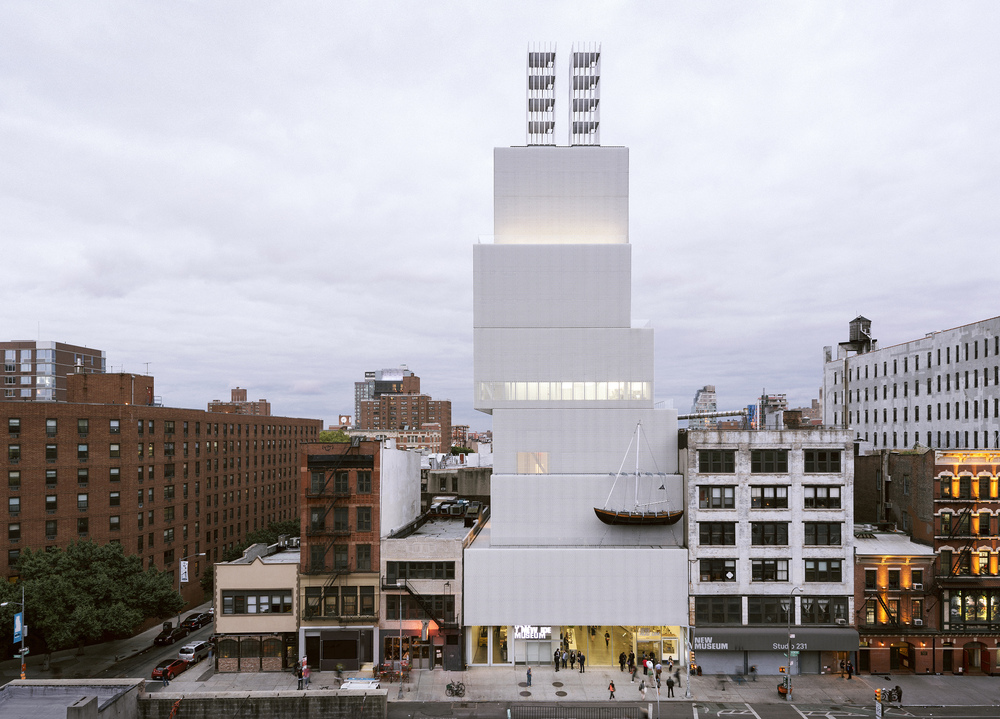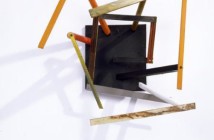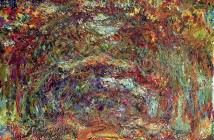I've hesitated to comment on the following story, if only because it is still being written. However, the fascinating conundrum that faces Chris Burden and Gagosian Gallery is far too rich to pass up. As was widely reported, Burden's Beverly Hills exhibition last March was cancelled due to yet another economic catastrophe. The gallery reported that the SEC froze 100 kilos of gold bullions bought by the gallery for Burden's exhibition while it investigates the improprieties of Stanford Financial Group, the parent company for Stanford Coins and Bullion who sold the bullion to Gagosian. Allen Stanford and his former top aides James Davis and Laura Pendergest-Holt are accused of selling fraudulent certificates of deposit issued by Stanford's offshore bank and then of bribing regulators and accountants to ignore any allegations. In short, Stanford was operating a billion dollar Ponzi scheme. His arrest and the investigation of his assets have restrained one of art's most notorious figures, but more interesting, it sheds light on the artist's working process, one that has been completely inverted.
This is not the first time Burden has incorporated gold bullion into his work. Tower of Power, 1985, consists of 100 one-kilo pure gold bricks arranged in a pile on a marble base, with various matchstick men looking up at it. First shown in Hartford, CT at the Wadsworth Atheneum and later in Vienna, the gold was originally borrowed from a Rhode Island bank for the duration of the exhibition, at about 6% interest, according to the LA Times (who was quoting the Wall Street Journal). Worth about $1 million at the time, a Wadsworth curator told the Chicago Tribune: "We would hope the visitor to this exhibition can go beyond the thrill of the glitter, and what better way to illuminate the perception of art solely in terms of economic value than in a $1 million work in gold."
Burden has performed in multiple roles on the economic spectrum. His early performances are razor sharp in their reductive qualities. Never were they documented or performed in obvious sensational ways, instead, relying on the performance act itself, to carry emotional and mythical weight. For example, in Shoot, Burden was shot with a 22 caliber rifle inside a Santa Ana Gallery. While this could have easily been a spectacle, the only documentation is a grainy super 8 film lasting about 8 seconds. The only audience allowed to witness the actual event were the people making it happen: The artist, the shooter, the photographer and the gallery owner. In short, the sensationalism involved in this piece does not spawn from Burden's working methods, only in his conception of the work.
Burden's overtly theatrical content (he was shot!) serves a perfect counterbalance to his modest, minimal and disciplined approach. Likewise, The Reason for the Neutron Bomb, 1979, is a masterpiece of economic restraint. In 1979, the Soviet Union positioned 50,000 highly sophisticated tanks to stand guard along Western and Eastern Europe. The United States maintained only 10,000, thus, to account for and fully visualize this numerical imbalance Burden created "The Reason for the Neutron Bomb." The installation of the work is simple enough: 50,000 nickels are arranged on the floor and 50,000 matches rest on top of these nickels and point West. Financially, the piece can be produced with just a few dollars for the matches, as they are the only material costs to produce the work. Assuming someone is available to front a few thousand dollars, the nickels are borrowed from a bank and when the exhibition is over, can simply be liquidated. Despite the enormous and politically charged content, Burden's approach is dry and calibrated, like an accountant's ledger.
Burden has not maintained this modest approach, in fact, in might be argued that over the years he has inverted his methods. ForThe Flying Steamroller, 2006, a twelve ton steamroller is attached to a pivoting arm with a counterbalance weight. The steamroller is driven around a circle with the pivoting arm at the same time a hydraulic piston is activated and pushes the beam from which the steamroller is suspended, causing the steamroller to lift off the ground and "fly." An enormous amount of resources are expended for what is a very simple concept. While the poetry of a flying steamroller will never be lost on me, the work depends on irony in a way none of his early works do. Instead of maximizing his limited resources for incomprehensible concepts, Burden capitalizes on his vast resources for more "whimsical" results.
Which returns me to "One Ton, One Kilo", Burden's cancelled exhibition at Gagosian Gallery. The press release stated the exhibition would have paired a "historical" work with a new one. The Kilo part of the exhibition is the gold, and safe to say is a configuration of Tower of Power. The legal freeze on the bullion poses an interesting problem that shoots to the heart of Burden's varied approaches. His acquisition of gold from a Rhode Island bank is similar to The Reason for the Neutron Bomb, in that the sculpture is contingent on borrowing currency for display. Someone to guarantee that currency is all that is needed. However, guaranteeing 50,000 nickels and 3.3 million dollars in gold bullion are different games, and speak volumes about the growth and embrace of Burden's practice. Gagosian purchased the gold this time around (or at least tried to), erasing the poetic exchange between bank and patron that ran the course of each of the previous exhibitions. Yet, with all these resources the work is held up indefinitely. This would not happen with nickels.
- Chris Burden, Shoot, still from a super 8, 1971
- Chris Burden The Flying Steamroller, 2006.
- Chris Burden, detail of The Reason for the Neutron Bomb, total area: 514 square feet (30 feet 8 inches x 17, feet 6 inches) 50,000 nickels, 50,000 matchsticks, 3/4 inches in length, 1979
"One Ton, One Kilo" was going to be on view March 7 - April 4th, 2009 at Gagosian, Beverly Hills. All images are courtesy of the artist, Gagosian Gallery and Google Image search.

